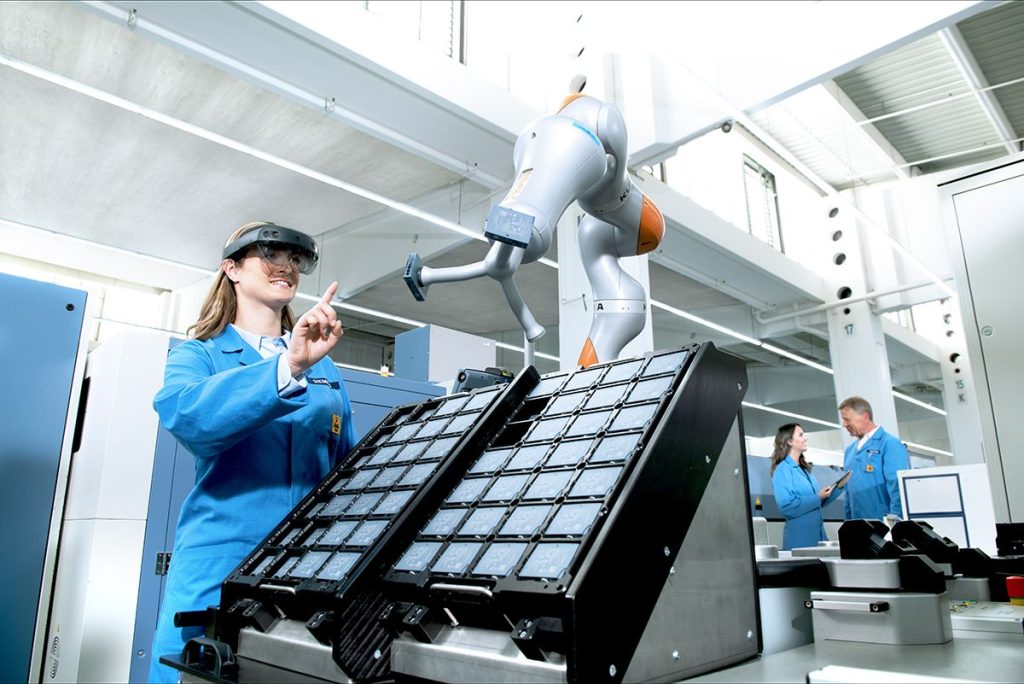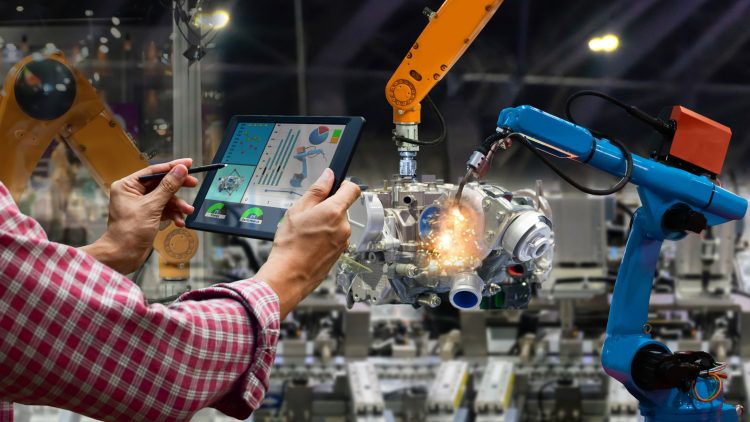Introduction
As we advance into the 21st century, robotic technology is rapidly transforming from a specialized tool used in industrial and military sectors to an indispensable component of daily life. The future of robotics promises to create a more efficient, intelligent, and diverse world where automation, artificial intelligence (AI), and machine learning seamlessly integrate into every aspect of human existence. From revolutionizing industries like manufacturing and healthcare to enhancing personal lives through smart home devices and robotic assistants, the potential for robots to drive societal progress is vast.
This article explores how robotic technology will reshape human society, delving into its contributions to efficiency, intelligence, and diversity. We will also examine the technical innovations driving this revolution, the ethical considerations that arise, and the challenges that must be addressed for a successful integration of robots into our future.
1. The Evolution of Robotic Technology
1.1 The Early Beginnings: Industrial Automation
Robotics as we know it today emerged from the need to automate repetitive, dangerous, and physically demanding tasks in industries. The first industrial robots, introduced in the 1960s, were designed to perform tasks like welding, assembly, and painting in manufacturing plants. Over time, these machines became increasingly sophisticated, leveraging sensors and AI to perform tasks with higher precision and adaptability.
- Industrial Robotics: The introduction of robots in factories revolutionized production lines, improving efficiency, reducing costs, and enhancing product consistency. Robots replaced humans in tasks that were dangerous, such as handling toxic chemicals or working in high-temperature environments.
- Collaborative Robots (Cobots): As technology advanced, robots evolved from autonomous machines to collaborative robots (cobots) that can work alongside humans in close proximity. These robots combine the precision and consistency of machines with the creativity and flexibility of human workers.
1.2 The Rise of Intelligent Robots
The rise of artificial intelligence (AI) and machine learning has transformed robots into intelligent systems capable of not only executing pre-programmed tasks but also adapting to new situations, learning from experience, and even solving complex problems.
- AI and Machine Learning: By integrating AI algorithms, robots can process large volumes of data, recognize patterns, and make decisions based on real-time input. Machine learning allows robots to improve their performance by learning from previous interactions and outcomes.
- Autonomous Robots: The development of fully autonomous robots—capable of performing tasks without human intervention—has led to innovations in fields like autonomous vehicles, delivery drones, and robotic assistants.
1.3 The Expanding Scope: Personal Assistants and Healthcare
While industrial robots remain a significant part of the economy, their application is expanding into personal and healthcare domains. Robots are becoming more prevalent in homes, assisting with household chores, elderly care, and even serving as companions.
- Personal Robotics: Robots like vacuum cleaners, lawnmowers, and home security systems are now common in many households, simplifying tasks and improving convenience.
- Healthcare Robotics: Surgical robots, rehabilitation devices, and diagnostic assistants are changing the way healthcare professionals treat patients. Robots can perform minimally invasive surgeries, assist in physical therapy, and even provide companionship for the elderly.
2. Robots and Efficiency: Accelerating Human Progress
2.1 Reducing Human Error and Enhancing Productivity
One of the most significant advantages of robotic technology is its ability to perform tasks with unparalleled precision and consistency. Robots can execute repetitive tasks without fatigue or error, which has profound implications for industries that rely on high levels of accuracy.
- Manufacturing and Production: Robots in factories can work around the clock, increasing production rates and reducing human errors. Tasks like assembly, welding, and packaging can be automated, allowing for faster, more consistent product delivery.
- Data Analysis: AI-powered robots are also transforming fields that rely heavily on data, such as finance and healthcare. With their ability to analyze vast amounts of data in real-time, robots can assist with decision-making processes, identifying trends and anomalies that might otherwise go unnoticed.
2.2 Optimizing Resource Allocation
Robotic technology enables more efficient use of resources, from time and energy to raw materials. In sectors like agriculture, manufacturing, and energy production, robots can optimize the use of resources, reducing waste and increasing sustainability.
- Sustainable Agriculture: Robots equipped with AI and machine vision can monitor crop health, identify pests, and even perform precision farming techniques such as planting and watering. This leads to more efficient use of land and water resources, reducing the environmental impact of farming.
- Smart Cities: In urban environments, robots can optimize energy consumption by managing heating, cooling, and lighting systems more effectively. AI-controlled robots can also assist in waste management, reducing the need for manual labor and increasing recycling rates.
2.3 Enhancing Transportation and Logistics
The future of robots extends beyond manufacturing and healthcare into transportation and logistics. Autonomous vehicles, drones, and robotic delivery systems are poised to revolutionize how goods and people move, making transportation faster, safer, and more efficient.
- Autonomous Vehicles: Self-driving cars and trucks will improve road safety by reducing human errors, such as distracted driving and fatigue. These vehicles will also be able to communicate with one another to optimize traffic flow and reduce congestion.
- Robotic Delivery: Drones and ground robots are already being tested for last-mile delivery, reducing the need for human couriers and lowering transportation costs. These systems can deliver packages quickly and efficiently, even in areas that are difficult for traditional delivery methods to reach.

3. Robots and Intelligence: Unlocking New Frontiers
3.1 The Role of Artificial Intelligence in Robotics
At the heart of many robotic advancements is AI, which enables machines to think, learn, and adapt. Through machine learning algorithms, robots can improve their functionality over time, becoming increasingly capable of performing tasks autonomously.
- Cognitive Robotics: Cognitive robots, which combine sensory input with AI-driven decision-making, are beginning to excel in tasks requiring reasoning and problem-solving. These robots can analyze complex environments, make decisions based on their observations, and act in dynamic, unpredictable situations.
- Robots with Emotional Intelligence: Emotional intelligence is a crucial area of development for robots, especially in caregiving roles. Robots equipped with emotional recognition capabilities can respond to human emotions, offering empathy and support in healthcare and social settings.
3.2 Collaborative Intelligence: Humans and Robots Working Together
Rather than replacing humans, robots are increasingly being designed to complement human intelligence. Collaborative robots (cobots) work alongside human operators, enhancing human capabilities and creating new possibilities for innovation.
- Healthcare: In hospitals, robots assist doctors by performing precise surgeries or providing physical rehabilitation to patients. These robots help professionals focus on more complex tasks while taking care of repetitive, time-consuming procedures.
- Industrial Applications: In manufacturing, cobots work alongside human workers on assembly lines, handling heavy lifting or repetitive tasks, which allows human workers to focus on tasks that require creativity, problem-solving, and decision-making.
3.3 Robotics in Education and Research
Robots are also becoming powerful tools in education, where they help students develop critical skills in areas such as problem-solving, coding, and creativity.
- Robotics as a Teaching Tool: Educational robots can engage students in STEM (Science, Technology, Engineering, Mathematics) education by providing hands-on learning experiences. These robots help teach coding, mathematics, and engineering principles in a way that is interactive and engaging.
- Research and Development: Robots also play a critical role in scientific research, from conducting experiments in hazardous environments to exploring distant planets. The use of robotics in research accelerates innovation, allowing scientists to explore new frontiers in space, medicine, and materials science.
4. Robots and Diversity: A New Era of Inclusivity
4.1 Enhancing Accessibility for All
Robotic technology has the potential to improve accessibility for individuals with disabilities, making daily life easier and more inclusive. From mobility aids to cognitive assistants, robots can empower people to live more independently.
- Assistive Robots: Robots like exoskeletons and robotic arms are helping people with physical disabilities regain mobility and independence. These devices provide enhanced movement capabilities and assist with tasks like walking, lifting, and dressing.
- Cognitive Assistants: Robots designed for cognitive assistance can help individuals with learning disabilities, autism, or cognitive impairments by offering personalized support, reminders, and guidance.
4.2 Social Impact: Bridging Cultural Gaps
As robots become more integrated into society, they will also help bridge cultural and linguistic divides, making communication and understanding easier across different communities. With multilingual capabilities, robots can assist in translation and facilitate cross-cultural exchanges in various settings, from education to international business.
- Language and Translation: Robots equipped with AI-driven translation software can help people communicate in real-time, breaking down language barriers and fostering greater global understanding.
- Cultural Sensitivity: Robots can be designed to respect cultural norms and values, providing services that are mindful of local customs and practices.
4.3 Fostering Global Collaboration
Robotic technology can also encourage collaboration on a global scale. By enabling remote collaboration, virtual robotics, and telepresence, robots allow teams from different parts of the world to work together more efficiently, overcoming geographical barriers.
5. The Road Ahead: Challenges and Opportunities
While the future of robotics holds immense promise, it is not without its challenges. The widespread adoption of robots in society raises questions about job displacement, ethical concerns, and the need for regulation. Ensuring that robots contribute positively to society will require collaboration between governments, businesses, and researchers.
- Job Displacement and Retraining: As robots take on more tasks, some human jobs may be displaced. However, new opportunities will also arise in fields like robotics development, AI, and machine learning. A focus on retraining and reskilling the workforce will be essential to ensure a smooth transition.
- Ethical Considerations: The development of AI-driven robots raises concerns about privacy, autonomy, and the potential for misuse. Ethical frameworks will need to be established to ensure that robots are designed and used responsibly.
Conclusion
Robotic technology is poised to revolutionize human society, making our world more efficient, intelligent, and diverse. As robots integrate into every aspect of life, from manufacturing and healthcare to education and personal care, they will enhance human capabilities and create new possibilities for progress. With careful planning, innovation, and ethical considerations, robots will help shape a future where efficiency, intelligence, and inclusivity are at the heart of societal development.











































